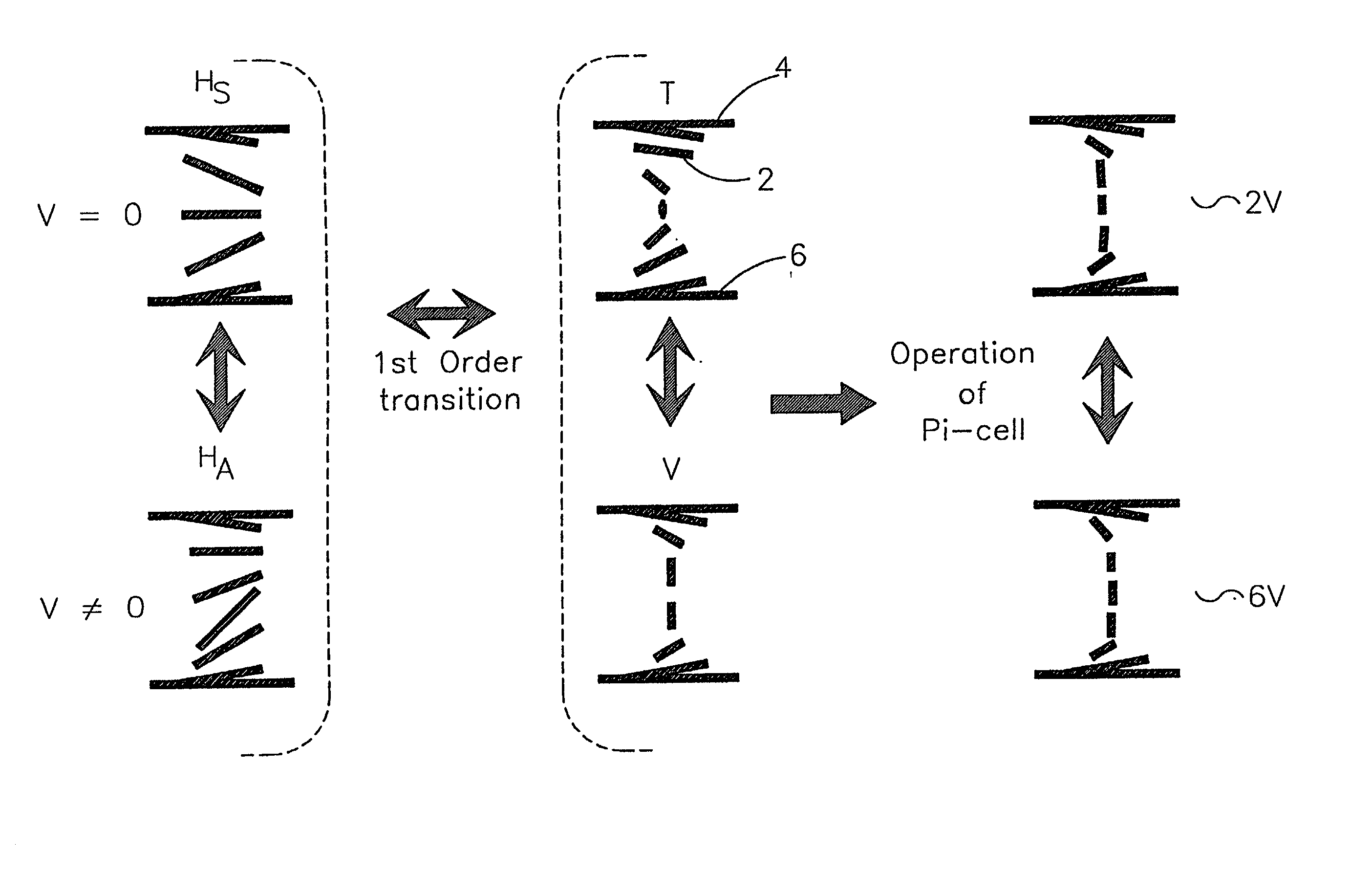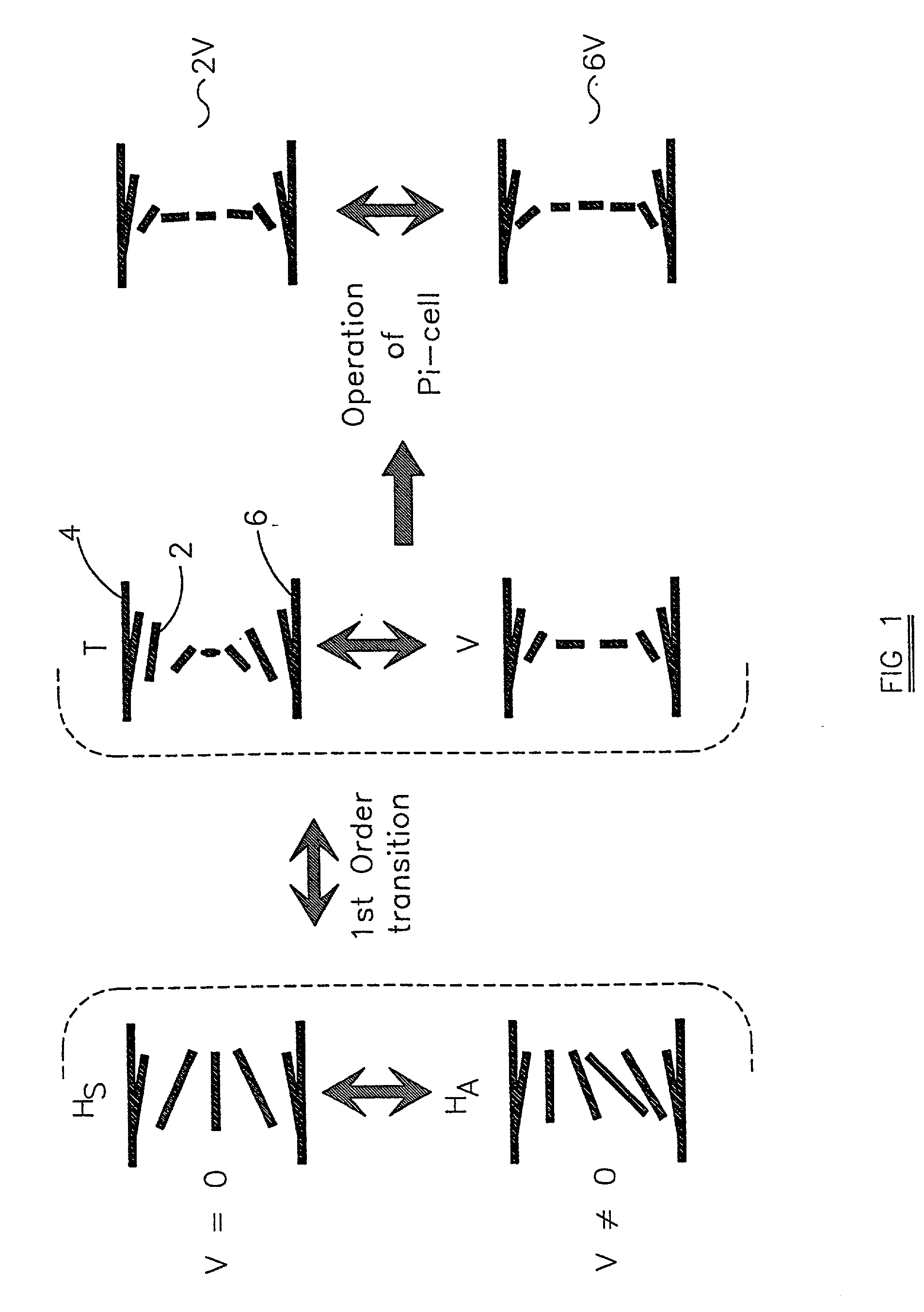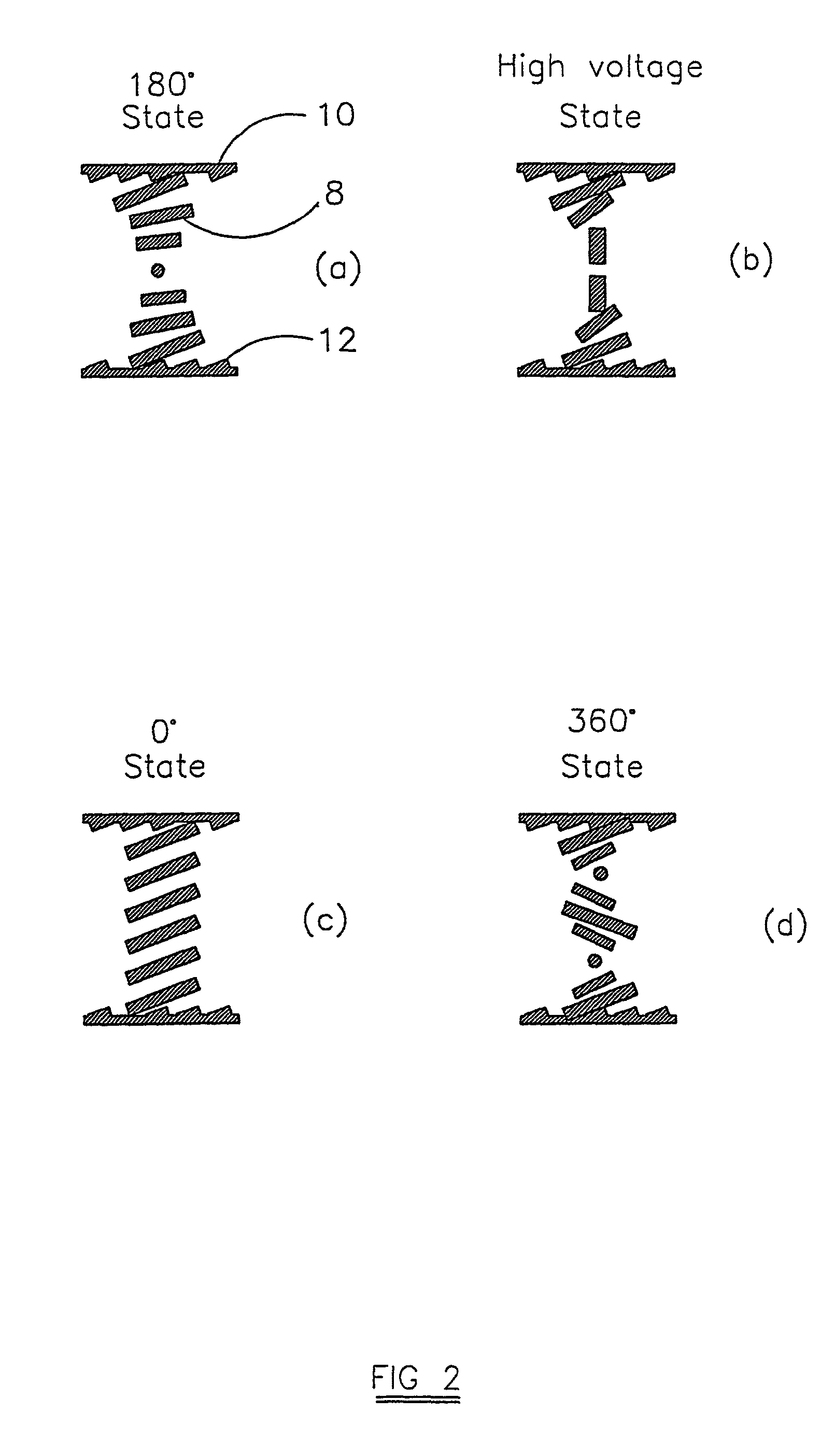Nematic liquid crystal devices, and methods of production thereof
a liquid crystal device and nematic technology, applied in the direction of liquid crystal compositions, instruments, chemistry apparatus and processes, etc., can solve the problems of reducing yield, reducing yield, and just observing the alignment layer can produce occasional failures, and achieve the effect of reducing yield and low voltage nucleation
- Summary
- Abstract
- Description
- Claims
- Application Information
AI Technical Summary
Benefits of technology
Problems solved by technology
Method used
Image
Examples
first embodiment
[0034] the invention uses twisted anisotropic protrusions to nucleate V-state from H-state.
[0035] Referring to FIG. 3a, two indium tin oxide glass coated substrates 30 and 42 were coated, as known to those skilled in the art, with alignment layers 32 and 33 formed from SE610 (Nissan chemicals). Each substrate 30, 42 was then unidirectionally rubbed again as known to those skilled in the art. Referring to FIG. 3b, on one of these substrates 30 a mixture of 1:3 reactive mesogen RM257 (Merck) to toluene was spun at 1200 rpm (at 80.degree. C.), the RM257 being previously doped with 1.2% CB15 (Merck) to form a protrusion layer 34. Again at 80.degree. C. the RM257 / CB15 protrusion layer 34 was UV cured through a mask 36 by UV radiation 38, and then rinsed in toluene to leave one substrate 30 coated with about 2.5 micron high twisted anisotropic protrusions 40, as shown in FIG. 3c. This substrate 30 was then fabricated into a 5 micron thick pi-cell using the other substrate 42, as shown in ...
second embodiment
[0038] the invention uses tilted anisotropic protrusions to nucleate V-state from H-state Referring again to FIGS. 3a to 3d, and using the same reference numerals for simplicity, two indium tin oxide glass coated substrates 30 and 42 were coated, as known to those skilled in the art, with alignment layers 32 and 33 formed from SE610 (Nissan chemicals). Each substrate 30, 42 was then unidirectionally rubbed again as known to those skilled in the art (FIG. 3a). On one of these substrates 30 a mixture of 4:1:15 diacrylate RM257 (Merck) to monoacrylate RM308 (Merck) to toluene was spun at 1200 rpm (at 80.degree. C.) to form a protrusion layer 34. Again at 80.degree. C. the RM257 / RM308 protrusion layer 34 was UV cured through a mask (FIG. 3b) and then rinsed in toluene to leave one substrate 30 coated with about 2.5 micron high tilted anisotropic protrusions 40 (FIG. 3c). This substrate 30 was then fabricated into a 5-micron thick pi-cell using the other substrate 42 as shown in FIG. 3d....
fourth embodiment
[0043] the invention uses tilted anisotropic protrusions for isolation of states in a BTN Device. We have found that tilted anisotropic protrusions also act as isolation regions in BTN devices. In this case each pixel of a display panel is fully surrounded by such a protrusion.
PUM
| Property | Measurement | Unit |
|---|---|---|
| thick | aaaaa | aaaaa |
| voltage | aaaaa | aaaaa |
| anisotropic | aaaaa | aaaaa |
Abstract
Description
Claims
Application Information
 Login to View More
Login to View More - R&D
- Intellectual Property
- Life Sciences
- Materials
- Tech Scout
- Unparalleled Data Quality
- Higher Quality Content
- 60% Fewer Hallucinations
Browse by: Latest US Patents, China's latest patents, Technical Efficacy Thesaurus, Application Domain, Technology Topic, Popular Technical Reports.
© 2025 PatSnap. All rights reserved.Legal|Privacy policy|Modern Slavery Act Transparency Statement|Sitemap|About US| Contact US: help@patsnap.com



